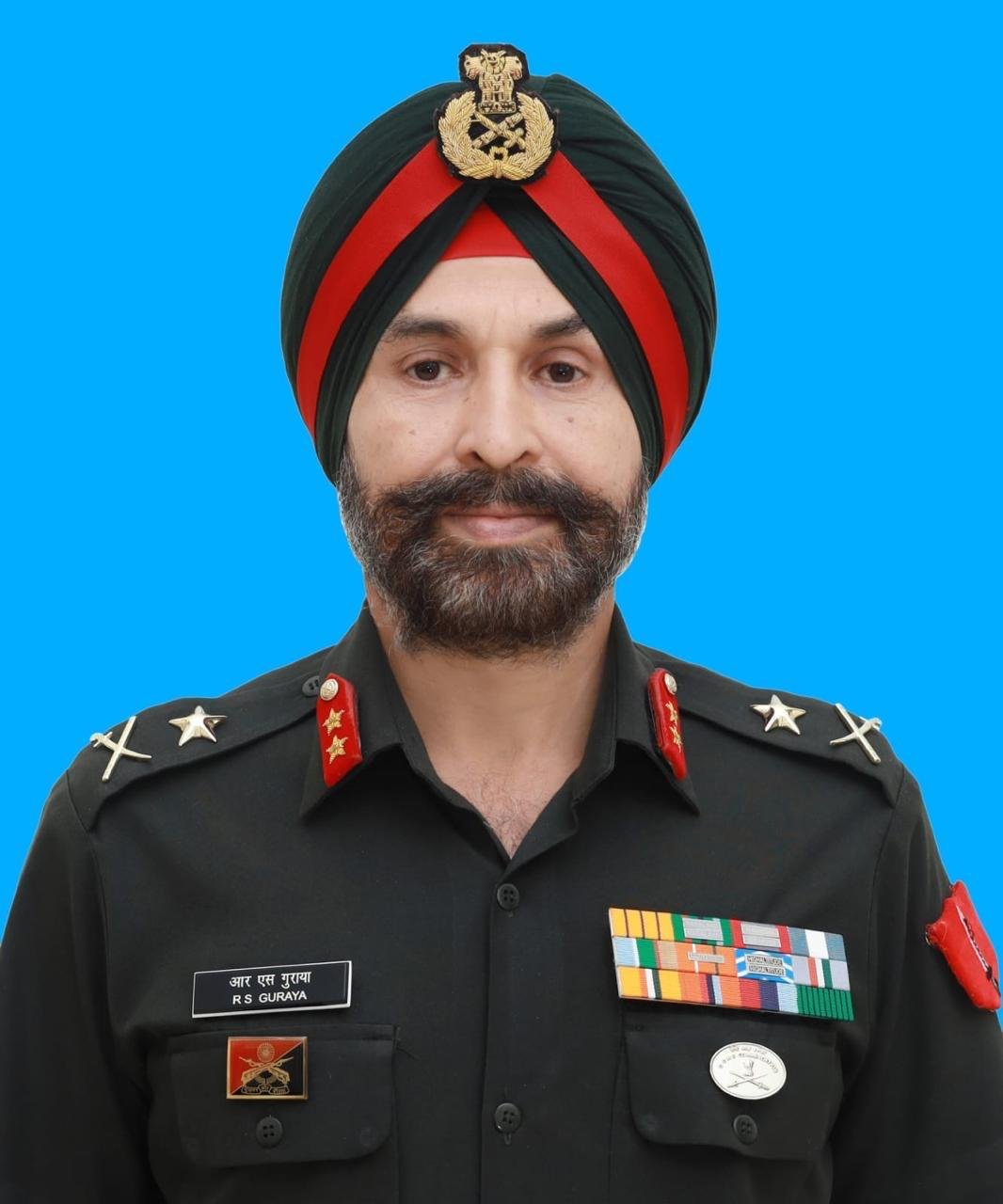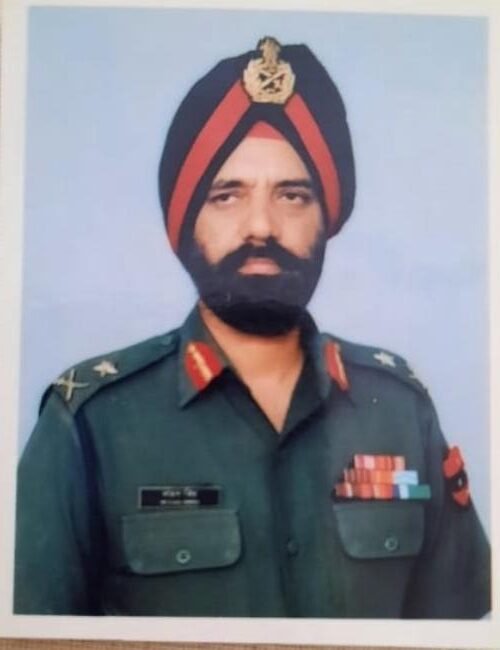







Lethpora (Pulwama), Feb 14
The local militant, Adil Dar (21), who rammed his car into the CRPF convoy had joined the Jaish-e-Mohammad (JeM) in April last year, police sources said.
Dar is the second Kashmiri militant to have been involved in a suicide bomb attack on troops. In 2000, a JeM militant from Srinagar, Aafaq Shah, had blown up an explosive-laden vehicle outside the Army’s 15 Corps headquarters.
A JeM spokesperson later claimed responsibility for Thursday’s attack and identifed the suicide bomber as Adil Ahmad, alias Waqas Commando, of Pulwama. Before the attack, the militant recorded a video statement, which was later released on the social media.
Police sources said Dar, a Class X passout, was listed as a ‘category C’ militant. “He used to work as a band saw machine operator before joining militancy,” a police officer said. Dar’s family claimed he had left home last year.
“We have had no contact with him ever since,” said Aarif, his younger brother.
Jaish has been declared a terrorist organisation by the UN Security Council.
However, the India-led proposal to put a ban on Jaish supremo Masood Azhar continues to be blocked by veto-wielding China. Sources say a fresh attempt at moving the proposal is unlikely. — TNS
Explosion was heard 10 km away
The explosive used in the attack was so strong that the blast was heard 10-12 km away, locals said. Some of the bodies were so badly blown up that officials feel it may take some time to identity them. This was the first suicide car bomb strike in Kashmir since the 2001 attack on the Assembly that left 41 persons, including three suicide attackers, dead.
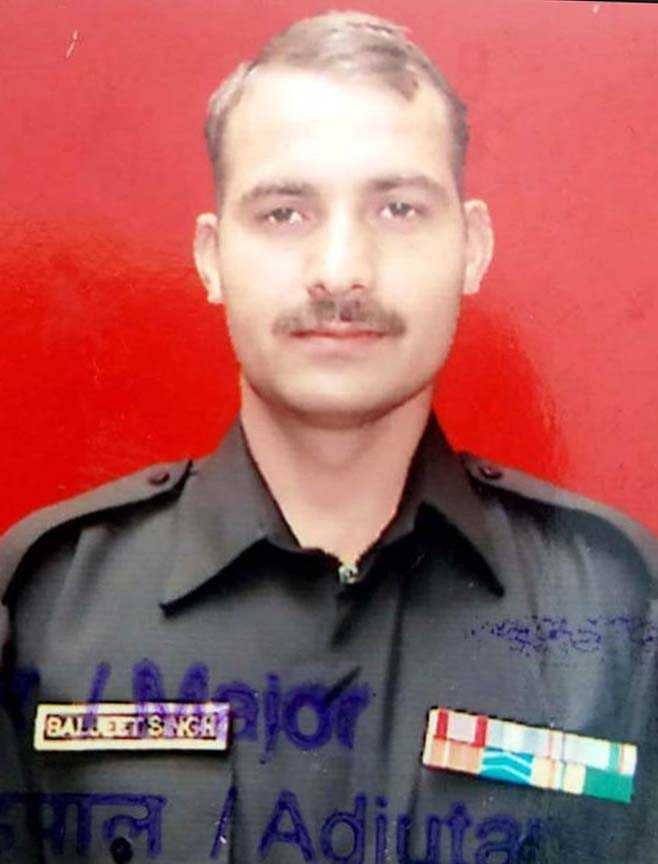
Suhail A Shah
Anantnag, February 12
A soldier along with a local militant — who helped LeT commander Naveed Jutt flee a Srinagar hospital — was killed in a gunfight in Pulwama district of south Kashmir today. Two Army men were injured.
An Army officer identified the slain soldier as Havildar Baljeet Singh, 35, a resident of Karnal district of Haryana. Singh had joined the force in 2002.
The two injured personnel were taken to the Base Hospital, Srinagar, where they are undergoing treatment.The militant, Hilal Ahmad Rather, a resident of Begum Bagh area of Pulwama, was associated with the Hizb-ul-Mujahideen.
“He had helped Pakistan terrorist Naveed Jutt escape police custody at the SMHS hospital in Srinagar on February 6 last year. Two policemen were killed in the incident,” said a senior police official. Jutt was killed in an encounter on November 28, last year.The gunfight started around 3.30 am in Ratnipora when security forces were cordoning off the area following inputs of militants’ presence.
Later, clashes erupted prompting the security forces to use tear smoke shells and pellet guns to disperse youths.
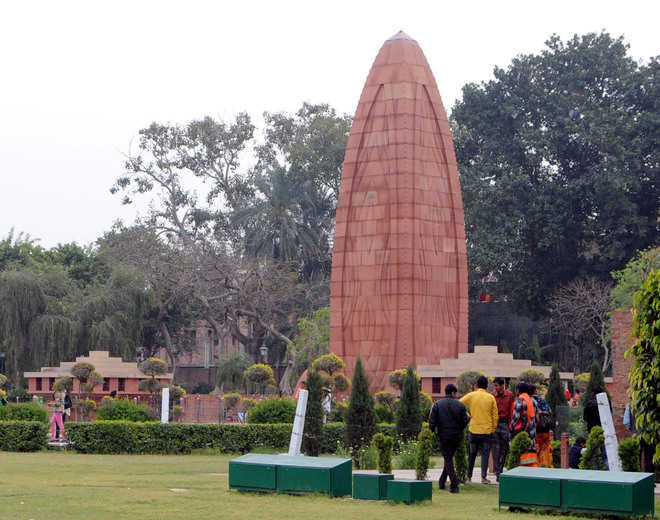
Vishav Bharti
Tribune News Service
Chandigarh, February 10
The 1919 Jallianwala Bagh massacre in Amritsar was not an isolated incident or the outcome of a brutal mindset, but a “calculated move to strike terror” among the masses, says a new book by a British historian.
To be released on Tuesday, Jallianwala Bagh: An Empire of Fear and The Making of A Massacre by Kim A Wagner argues that demonstrations of violence were intrinsic to the colonial encounter not just in British India, but also Asia, Africa and the Middle East.
The book is based on a range of material from diaries and letters to court testimonies. Wagner observes that the story of Jallianwala Bagh is also the story of a particular colonial mindset haunted by the spectre of the ‘Mutiny’ or the First War of Independence.
“After 1857, the British in India did not respond to local unrest as much as to what they imagined that unrest was or could become — hence the consistent disproportionality of violence on the part of the colonial regime. The Amritsar massacre was accordingly both retributive and pre-emptive: Dyer took revenge for the attacks on Europeans, including Miss Sherwood [a missionary teacher attacked in Amritsar], during the riots three days earlier, but he also acted to prevent a much bigger outbreak that he believed to be imminent.”
He writes that at Amritsar, Dyer had simply followed the example of so many colonial officials before him, including Frederick Henry Cooper, Amritsar DC during the 1857 rebellion, or L Cowan, who ordered Kukas to be blown from guns in 1872.
Both had resorted to “exemplary and indiscriminate violence when faced with rebellion and anti-colonial unrest”. Wagner says that rather than an exceptional episode, “in singular and sinister isolation”, the Amritsar massacre revealed the inner workings, and the imagined vulnerability, of the British colonial rule in India.
Colonial punishment, Wagner observes, had little to do with justice, and that the suppression of the unrest in Punjab in 1919 exposes the fundamental lie about the pre-eminence of the rule of law in British India in the most glaring fashion.
“A week after the massacre at Jallianwala Bagh, on 21 April 1919, Lieutenant Governor Michael O’Dwyer made a remarkable statement when defending Dyer’s actions to Viceroy Chelmsford: ‘The Amritsar business cleared the air, and if there was to be a holocaust anywhere, and one regrets that there should be, it was best at Amritsar. O’Dwyer was here using the word ‘holocaust’ in its literal sense of a ‘burnt offering’ – as a sacrifice. The crowd at Jallianwala Bagh, in other words, had to be sacrificed to produce the necessary effect, ‘clearing the air’, and preventing a second ‘Mutiny’.”
The book finds that Amritsar massacre was just in continuity of what the British were doing to the local populations, variously described as ‘tribal’, ‘savage’ or ‘fanatic’, on the North-West Frontier in Afghanistan, in Sudan or throughout parts of Africa and elsewhere.
They routinely massacred locals with machine guns, drove off cattle and burned villages in demonstrative displays of power. “What became known as ‘savage warfare’ was not simply shaped by the tactical necessities of asymmetric fighting against irregular enemies, but was based on deeply encoded assumptions concerning the inherent difference of local opponents.”

The Indian Air Force is all set to deploy ASRAAM heat seeking close combat air-to-air missile in its Sukhoi Su-30 MKI Fighters, Livefist has reported. The IAF is currently in the final stages of the programme to mate the British missile system with Russian-origin Sukhoi fighter jets.
A pair of HAL-built Su-30 MKI jets have gone through required modifications in software to deploy the MBDA ASRAAM missile, top IAF sources were cited in the report as saying.
The move comes after IAF successfully integrated the missile system with its Jaguar deep penetration strike jets. The ASRAAM integrated Jaguars are part of IAF’s £250 million contract with United Kingdom’s MBDA in July 2014. The modified Jaguars are to be declared operation ready this year.
According to the report, the IAF is intending to fully replace the Su-30 MKI’s current close combat missile, Russian Vympel R-73, with the ASRAAM in a phased manner.
The ASRAAM-armed Su-30 would be reportedly declared ready around the same time as the Jaguars, and will make use of the same test cycle.
National Aerospace Laboratory (NAL) was tasked with the checking the stability of the ASRAAM on the Su-30 airframe at its Bengaluru wind-tunnel.
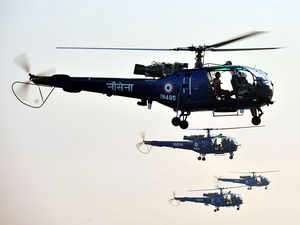
NEW DELHI: The defence ministry is set to invite private sector companies to participate in the Rs 21,000 crore deal for new naval utility helicopters, which will be the first project to kick off under the strategic partnership (SP) policy under the ‘Make in India’ initiative.
Sources said that the first ‘expression of interest’ (EoI) to the private sector under the policy will be issued for the helicopter deal in the coming days while others like a mega plan to manufacture submarines, ..

Given its precipitously declining numbers, the Indian Air Force’s plan to acquire a squadron plus (21 aircraft) of MiG-29s that were lying unassembled and moth-balled in a Russian facility, is actually a smart move. Earlier the IAF acquired 35 old airframes and spares of the Anglo-French Jaguar strike aircraft, 31 from France, and two each from UK and Oman, so as to cannibalise them for spares to keep their existing fleet, of some 118 or so Jaguars, flying.
Clearly, beggars cannot be choosers, and the IAF, which, in the past, had a propinquity for buying the best and most expensive aircraft, has been forced by circumstances to look at various options to maintain their combat profile and numbers.
Acquiring the MiG-29 Fighters
The IAF will get the MiG-29 fighters upgraded to the latest standards by Russia, and get them at virtually throwaway prices, reportedly Rs 200 crore per piece. They will augment the 62 MiG-29 fighters that are in the IAF’s fleet which are also being upgraded to give them an all-weather multi-role capability. In fact, there are reportedly 15 more such aircraft, so, the IAF would be well advised to get all of them.
They are already equipped with more powerful engines, fly-by-wire flight control systems, as well as the same radar as those of the MiG-29UPG standard, and will only need to install some India-specific avionics. They could well join squadron service in India within a year.
The Jaguar air frames from France, Oman and UK are essentially for harvesting spares of the aircraft which is no longer in production, or even in service in the countries of its origin—UK and France.
India is currently holding some 118 of these aircraft, and the IAF has determined that their air frames will be flight worthy till the 2030s, and so they are also being upgraded with better engines, a new cockpit and mission electronic suite, as well as some India-specific defensive avionics.
As a result, the upgraded Jaguar would be a formidable all-weather strike aircraft that can carry precision-guided munitions (PGMs) and be effective in providing close support to the Indian Army.
IAF Plagued By Poor Decision-Making
The IAF had also ordered 43 Tejas jet fighters with another 83 planned for the Mark 1A version. However, though there is a value in procuring them to encourage domestic R&D, these aircraft are simply not capable of combat flying. The present version of the Tejas is an excellent aircraft as a Lead-in fighter trainer (LIFT), but the IAF doesn’t set much store by this concept, unlike most advanced air forces. It remains to be seen just what the Mark 1A will be capable off, once it is actually developed.
The Indian Air Force’s problems with numbers is no secret, It has been plagued by poor decision-making, poor acquisition strategy and shoddy quality control and contract deliver
For example it has yet to get 25 Su-30MKI that were to be delivered by 2017 by HAL. Upgrades, such as that of 47 Mirage 2000s have also been delayed. Likewise none of the 61 Jaguars which were to have been upgraded have yet joined service. The LCA, is, of course, a story of its own marked by delays and performance problems. In addition, in the last 10 years, the Air Force has 90 combat aircraft have crashed.
Govt Yet to Give Formal Approval for Acquisition of New Fighters
All this comes on top of issues relating to the acquisition of new fighters. The IAF’s travails with the Medium Multi-role Aircraft (MMRCA) are well known, as well as the fact that instead of buying 126 of the Rafale’s decided-upon, the government suddenly decided to get just 36. Yet, a year later, it put out a Request for Information (RFI) for the acquisition of 114 fighters.
But the government is yet to give a formal approval for the acquisition, but it could well end up in the farcical situation where the same five fighters – MiG 29/35, Rafale, Eurofighter, Gripen, FA-18 and the F-16 compete, and if the requirement is for a fighter similar to the MMRCA, the Rafale could again emerge as the winner, as it would ease the IAF’s logistical nightmares relating to the operation of seven different types of fighters.
But the government probably has no intention of hurrying up at this stage. That is why the formal approval of the Acceptance of Necessity (AON) is yet to be given. And now we are in an election year
Interim Defence Budget Gives Little Hope
The Interim Defence Budget provides little hope that money will be forthcoming for any new acquisitions. This year, the IAF wanted Rs 75,000 crore for capital acquisitions, but it was only allotted Rs 39,347 crore which cannot even take care of its committed liabilities. The payments it has to make for past acquisitions amount to Rs 47,413 crore. The IAF will have to make do with combing junkyards and warehouses in the hope of getting spares to keep its fleet going.
The Air Force has only itself to blame for this state of affairs. Its philosophy has been to go for the best, instead of the most economical solution. So now we are stuck with a situation that it may have priced itself out, in the reckoning of the government.
The Indian defence system needs to have a deep look at the projected requirements of 42 squadrons which arise out of the government’s political directive of taking on China and Pakistan simultaneously.
While there may be the so-called “collusive threat” the idea of an all out war with Pakistan and China is far-fetched. But instead of planning to fight the kind of limited informationised war it may confront in the future, the Air Force is planning to fight a modern version of WWII.
(The writer is a Distinguished Fellow, Observer Research Foundation, New Delhi. This is an opinion piece, and the views expressed above are the author’s own. The Quint neither endorses nor is responsible for the same.)
Srinagar: Northern Command chief Lt Gen Ranbir Singh on Thursday appreciated the measures and standard operating procedures instituted by the units to minimise civilian casualties. Lt General Ranbir had arrived in Srinagar on Wednesday to review the security situation in Kashmir. On the second day of his two-day visit to the Valley, the Northern Command chief visited units in central Kashmir, where he was briefed by the commanders about the ground situation. He was accompanied by Chinar Corps Commander Lt Gen KJS Dhillon, an Army statement said. Lt General Ranbir emphasised meeting the security challenges more effectively, the Army statement said. Lauding the excellent synergy among all security forces, the Northern Command chief exhorted all ranks to maintain a safe, secure and peaceful environment for the people of Kashmir, it read. TNS
himla, February 22
Rescuers on Friday failed to resume a search operation owing to inclement weather near the Tibet border with Himachal Pradesh, where a snow avalanche killed a soldier while five others went missing this week.
As the searches entered the third day, the authorities suspected that the chances of survival of the five trapped in the snow pile was minimal.
“This morning the search operation could not begin due to overnight snowfall. We are hopeful the operation will resume later in the day as there are chances of the weather getting cleared,” a state government official told IANS.
He said the search mission, comprising army men and district rescuers, largely remained suspended on Thursday due of continuous heavy snow and avalanche warnings in the area.
An avalanche on Wednesday was triggered when the glacier near Namgia Dogri bordering Tibet slid, burying six soldiers of the Jammu and Kashmir Rifles when 16 of them were on a routine patrol.
Five Indo-Tibetan Border Force (ITBP) troopers were also injured in the disaster.
The state government said two separate parties of the Army and the ITBP were patrolling at Namgia Dogri when the avalanche hit.
The soldier who died has been identified as Rajesh Kumar, 41, belonging to Himachal Pradesh’s Bilaspur district.
The disaster spot, which is some 350 km from the state capital, has been witnessing heavy snowfall over the past few days. IANS
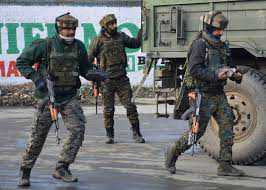
Tribune News Service
Srinagar, February 22
An encounter broke out between militants and security forces in Sopore township of Jammu and Kashmir’s Baramulla district on Friday morning, police said.
Acting on specific input, the security personnel launched a cordon and search operation in the Warpora area of Sopore, they said.
A senior official said the search operation turned into an encounter after the militants fired at the search party of the security men, who then returned fire.
The exchange of fire was on and further details were awaited, he added. PTI





